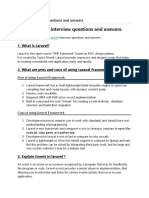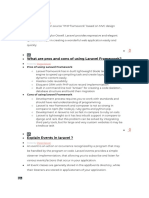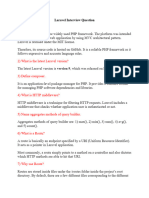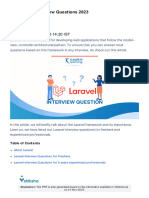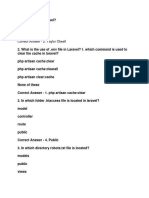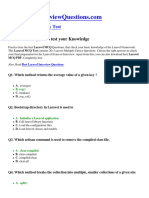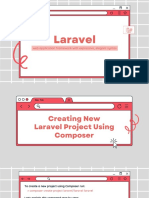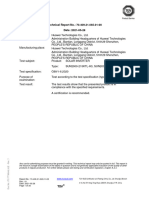0% found this document useful (0 votes)
89 views105 pages100 Advanced Laravel Interview Questions
This document contains 100 advanced interview questions related to Laravel, covering topics such as the service container, Eloquent ORM, middleware, authentication, and more. Each question is designed to test knowledge and understanding of Laravel's features and best practices. The document serves as a comprehensive guide for preparing for Laravel-related job interviews.
Uploaded by
sajitpanta10Copyright
© © All Rights Reserved
We take content rights seriously. If you suspect this is your content, claim it here.
Available Formats
Download as PDF, TXT or read online on Scribd
0% found this document useful (0 votes)
89 views105 pages100 Advanced Laravel Interview Questions
This document contains 100 advanced interview questions related to Laravel, covering topics such as the service container, Eloquent ORM, middleware, authentication, and more. Each question is designed to test knowledge and understanding of Laravel's features and best practices. The document serves as a comprehensive guide for preparing for Laravel-related job interviews.
Uploaded by
sajitpanta10Copyright
© © All Rights Reserved
We take content rights seriously. If you suspect this is your content, claim it here.
Available Formats
Download as PDF, TXT or read online on Scribd
/ 105



